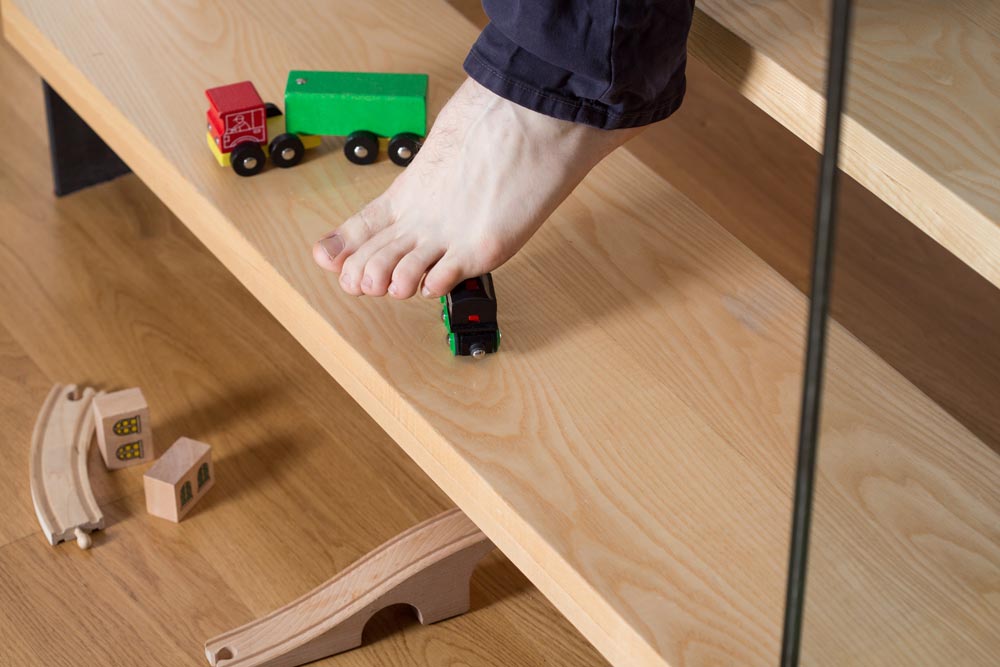Dyspraxia
Disorder
Dr. Jean Ayers, founder and researcher of Sensory Integration theory, described praxis as follows: The ability of the brain to conceive of, organize, and carry out a sequence of unfamiliar actions. It is a motor action based on our will, forming and acting on our intrinsic motivation to perform a certain task.
If we have praxis, we can behave purposefully. If we do not have praxis, we often struggle with impulsivity, destructive behavior and feeling very frustrated as well as powerless to enact our ideas onto this world. Clients who struggle with Dyspraxia will frequently show a history of poor play skills, and be described as being “bossy”, rigid or self-centered. If we focus on these behaviors, we frequently run into a brick wall of power struggles, performance anxiety and ruined family gatherings or vacations. If we focus on the ability to utilize praxis in a more purposeful way, we can impact on the client’s sense of autonomy, production and self-reliance.

Different Components:
- Having a motor idea
- Planning the idea
- Initiating this idea
- Sequencing through the idea
- Culminate in completing this idea within the same timing and rhythm as our peer.
- Our body also registers feedback that supports us to repeat that action.
- Feedback is important for self-motivated (intrinsic) repetition
Clients who struggle with Dyspraxia do not enjoy new and novel situations and / or surprises. They thrive on “sameness” and predictability, though life has a way to disturb this “peace”.
Different Sub-types:
- Generalized Dyspraxia – When the entire sensory motor system is involved, from head to toe.
- Somatodyspraxia – The developmental building blocks of tactile and proprioceptive systems form the foundation of this type of Dyspraxia
- Bilateral Integration, Sequencing and Timing (BIS (T)) – This type of Dyspraxia is driven by the foundations of vestibular-proprioceptive function, including the overlap of visual-spatial skills.
- Dyspraxia on Verbal Command – When the body is unable to follow through on a verbal command (auditory signal), but can follow through easily once visual model is provided only once.
- Apraxia of Speech – Planning the sequence of movements involved in producing speech, a speech sound disorder.
- Dysgraphia – Problems including illegible handwriting, inconsistent spacing, poor spatial planning on paper, poor spelling, and difficulty composing writing as well as thinking and writing at the same time – usually coincides with one of the different types of Dyspraxia’s noted above.
- Dyslexia – A general term for disorders that involve difficulty in learning to read or interpret words, letters, and other symbols, but that do not affect general intelligence – frequently coincides especially with BIS (T) Dyspraxic profile, though could be Generalized Dyspraxia as well.
- Dysorthographia – A learning disability in writing occurring in the absence of visual, hearing, or intellectual impairment. It appears as difficulties in recognition, understanding, and reproduction of written symbols. It is identified by slow writing and frequent errors and affects all spheres of spelling: grammar, conjugations, and sentence and word construction – associated with Dyslexia.
Our Unique Evaluation
- Comprehensive look at the impact of different sensory systems on the different Dyspraxic categories
- Finding the root cause of Dyspraxia is instrumental in targeting the correct plan of intervention
- Specifies which category of Dyspraxia can be attributed to the client profile
- All ages, from toddler to adult
- From reflexes formed in utero to executive functioning
- Explains social and emotional functioning
- Explains relationship with academic performance
- Considers the relationship to sports performance
- Connects Dyspraxia to behavior patterns from mild to extreme meltdown behavior.

It is an extensive evaluation completed with selective care over 2 direct hours, complimented by a range of questionnaires completed by the family. The comprehensive report will include recommendations that will serve as a roadmap of interventions with opportunities to meet with family / client on a regular basis to assess functional outcomes.
Neuroplasticity Research is very clear; The Brain can Change!
Our Unique Intervention Program:
We consider 3 phases of development that would be targeted successively according to the mild, moderate or severe continuum of needs of needs within which each child’s specific individual differences will be respected and upheld. The frequency and duration of each phase will be determined by the individual differences of each client.
Phase 1: Foundation
- Sensory modulation, reflex integration, sensory registration of information, sensori-motor skill, social-emotional regulation.
- May consist of intensive periods of 10, 12 or 15 consecutive days each (except weekends), as well as combinations of weekly visits to our center.
- Different types of Dyspraxia, as well as individual profiles, will warrant different considerations of length and frequency of intensives.
- Possibility of doing home programs for long distance clients
- Hybrid programs of shared responsibility between home and center also available
Phase 2:
- Strong focus on praxis, sequencing and timing skills.
- Ocular-motor skills, oral-motor skills, visual-spatial skills, praxis, bilateral integration, coordination and timing, social-emotional regulation.
- May consist of intensive periods of 10 or 12 consecutive days each (except weekends), as well as combinations of weekly visits to our center.
- Possibility of doing home programs for long distance clients
- Hybrid programs of shared responsibility between home and center also available
Phase 3:
- Consider laterality and interhemispheric organization
- Impact on executive functions
- Consider functional performance in reading, math and written expression
- Emotional regulation and social skills
- May consist of intensive periods of 10 or 15 consecutive days each (except weekends), as well as combinations of weekly visits to our center
- Possibility of doing home programs for long distance clients
- Hybrid programs of shared responsibility between home and center also available
